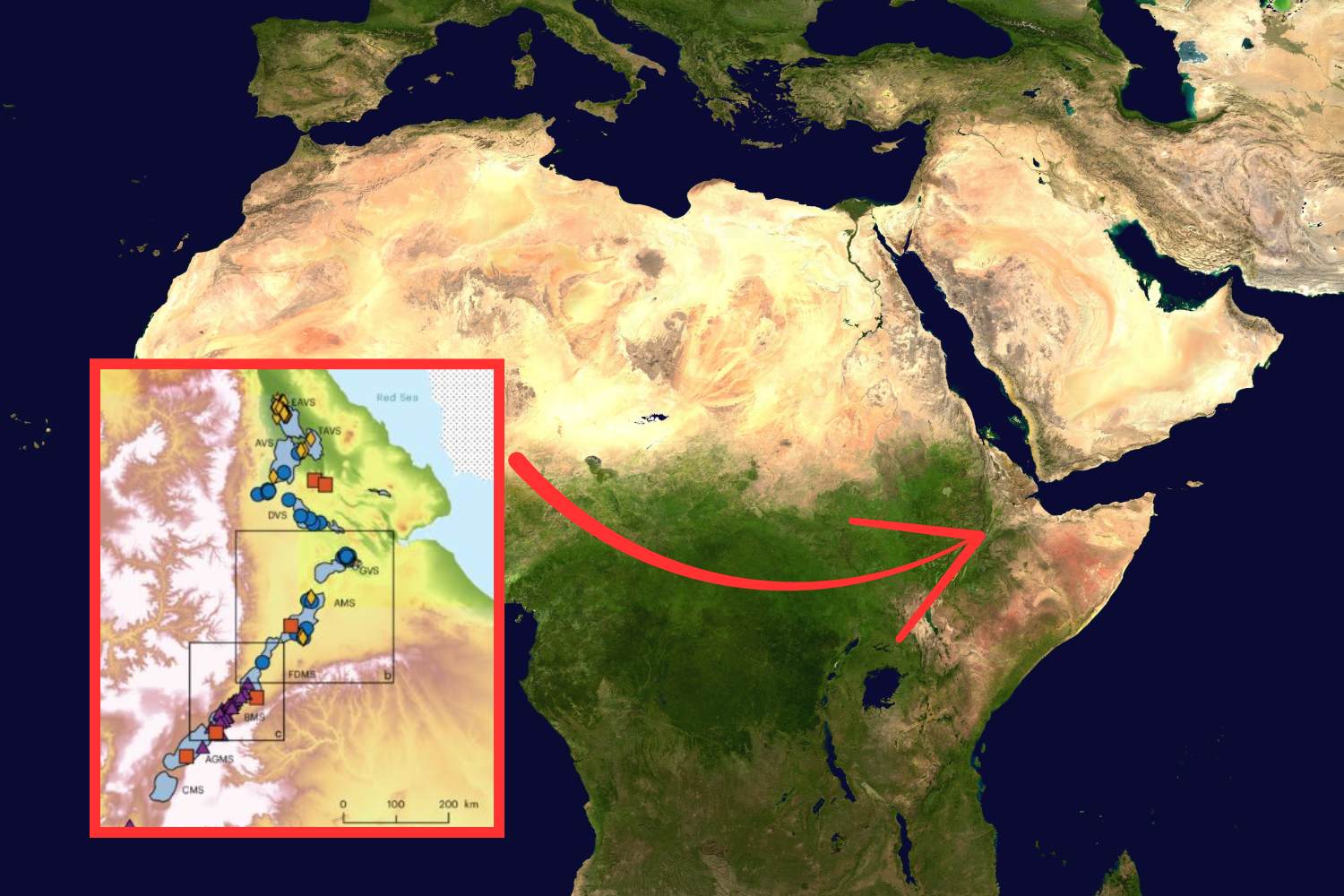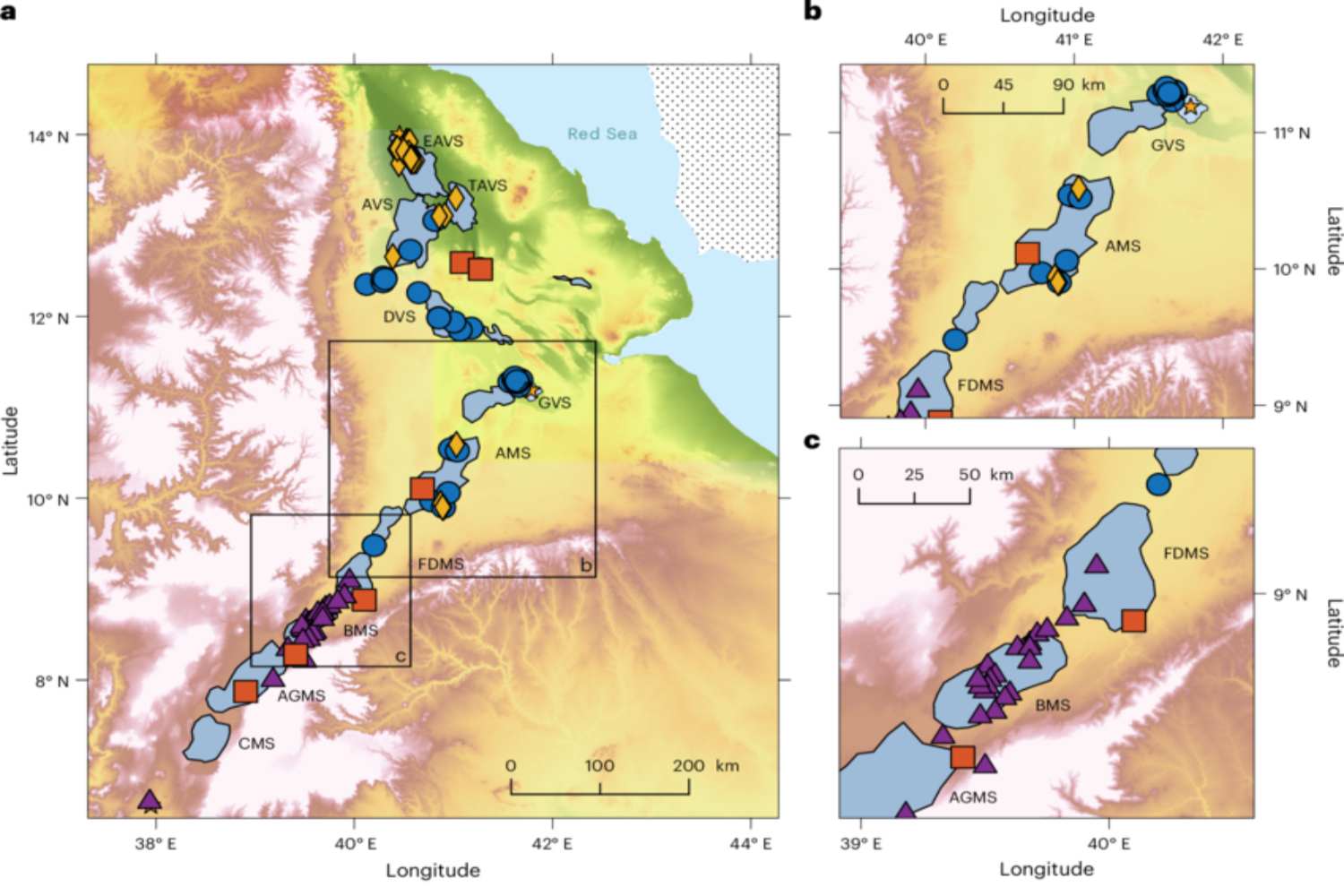Africa is splitting in two as tectonic plates drift apart in Ethiopia’s Afar region. A new ocean will eventually form, revealing Earth’s dynamic geological future.

@Nature Geoscience
In the heart of East Africa, deep in the Afar region, a new ocean is being born. It might sound like the stuff of science fiction, but the process is very real—and very slow. Here, three massive tectonic plates—the Nubian, the Somali, and the Arabian—are gradually pulling away from each other. The result? A vast crack in the Earth’s crust that, in a few million years, will be swallowed by the sea.
How a continent cracks open
This isn’t just a metaphorical fracture. It’s a geological process known as a continental rift, in which the Earth’s crust is physically torn apart by tectonic forces. You can already see the effects today in Ethiopia’s Rift Valley, where, back in 2005, a dramatic fissure opened up—over 30 miles (50 km) long. The rupture is evidence of something monumental in motion: a continent splitting apart.
The engine behind this transformation lies deep underground. Hot mantle material is rising up toward the surface, weakening the crust and forming what scientists refer to as proto-oceanic crust—the very foundation of future seafloors.
When will the new ocean arrive?
This isn’t happening overnight. We’re talking between 5 and 10 million years before water fills the rift and carves a true ocean basin into the African landscape. But the outcome is no longer in doubt: Africa will split into two distinct land masses. One will form a new microcontinent, including Somalia, Ethiopia, Kenya, and part of Tanzania. The rest will remain the continental core of modern-day Africa.
Eventually, the waters of the Red Sea and the Gulf of Aden will flood into the depression, transforming it into the planet’s sixth ocean. According to the journal Nature Geoscience, the geological community is watching this space with awe and curiosity.

@Nature Geoscience
Earth’s slow-motion drama, visible at last
What makes this rift particularly exciting is its rare visibility in real time. Normally, continental drift unfolds over such long time scales that humans never notice. But here, satellite GPS systems are picking up the plate movement with millimetric accuracy. For geologists, it’s like having a front-row seat to Earth’s private show.
The region also acts as an open-air laboratory for studying volcanic and seismic activity. Crustal rifting doesn’t always happen gently—it can be sudden and explosive, triggered by the upward thrust of magma from below. In many ways, this place is as dangerous as it is enlightening.
A harsh land, a magnificent transformation
For now, Afar remains one of the harshest environments on Earth, with temperatures soaring to 130°F (54°C). It’s barren, unforgiving, and almost alien. But beneath that brutal surface, a breathtaking transformation is unfolding—a new ocean is being born. It’s a slow miracle, a vivid reminder that our planet is alive, restless, and always changing.
Sources: Nature / Research Gate
